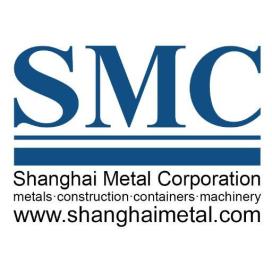Les boîtes en acier sont en train de devenir les nouveaux blocs de construction urbaine avec une particulière attention à stimuler l’achat des maisons à bon marché.
Un connu architect american qui s’appelle Price et son éponyme entreprise de design ont utilisé des conteneurs d’expédition longs 12 mètres, comme des géants blocs de Lego, pour construire trois complexes d’appartements à Washington D.C., qui est une ville où habituellement le prix moyen pou un studio est de 2,250 $, selon apartmentlist.com, et dans le classement Washington se trouve seulement après Boston, San Francisco et New York.
Les conteneurs d’expédition ont 2 mètres de largeur et 12 mètres de longueur, et donc chacun peut former un espace habitable de 28 mètre carré. Ils sont liés ensemble et peuvent former un notable espace habitable horizontal ou vertical.
Price est fermement convaincu que c’est un’idée géniale parce qu’il s’agit des nouveaux blocs de construction du 21ème siècle.
Toutefois comme il s’agit d’une nouveauté, elles ont un inconvénient,c’est- à-dire qu’elles sont vu comme des maisons mobiles et donc on se pose la question s’il vaut la peine de financer cet projet. En effet les maisons mobiles ou bien les maisons préfabriquées, à cause de son nom, beaucoup de banques ne vont pas prêter une hypothèque pour la construction d’une maison mobile, à moins que les roues sont éliminées, la maison se situe sur un fondement et les installations et la plomberie sont liées. L’architect Day a dit: “S’on se attache pas à une fondation permanente, il est difficile d’obtenir une hypothèque”.
En outre, les maisons-conteneurs peuvent avoir un problème de financement, parce que comme Day a dit, ils avaient presenté leur projet en disant qu’on pouvait aussi le déconstruire après pour construire quelque chose plus grande. Mais comme il était facile de le démonter, le développeur ne l’a pas acheté.
Toutefois, même si le design a rapporté beaucoup des reconnaissances, les frais pour utiliser métallurgistes et soudeurs pour joindre les conteneurs et fabriquer portes et fenêtres et aussi la méconnaissance du design comparé aux coûts de charpenterie traditionnelle (115$ pour mètre carré), rendent une vente difficile au développeur.
Les maisons-conteneurs assourent une vie accessible, et ils sont construits assez rapidement. Un projet de maisons-conteneurs a été fait à Washington, dans le quartier d’Edgewood, et il a fallu seulement sept mois pour l’élaborer et pour le construire.
Main on a été soulevé quelques préoccupations sur la sécurité des maisons-conteneurs, parce que étant donné que les casiers maritimes ont des sols en bois qui sont souvent traités avec des pesticides pour prévenir l’infestation ainsi que des substances chimiques qui préviennent la corrosion de l’air salé.
L’architect Day a dit que pour cette raison le recyclage de conteneurs d’expédition doit être fait trè minutieusement.
Le ralentissement économique globale peut aussi aider à rendre plus disponibles les containeurs d’expédition. Price a noté que chaque année il y a environ 2 millions de conteneurs laissés ”au repos” dans les ports.
Enfin, les maisons-conteneurs ne sont pas toujours économiques. Tandis que un conteneur peut être acheté avec 3,000$, une maison entièrement équipée, de luxe peut coûter 75,000$ ou bien 100,000$, dépendant de ferrures, matériaux isolants, revêtements et équipements du paroi et du sol. La seule chose qu’on économise c’est du temps. En effet la structure d’un appartement à plusieurs étages peut être assemblé en quelques heures et construit seulement en quelques jours plutôt qu’en quelques mois.
L’architect Day c’est très optimiste à propos de ce projet, il affirme: “Il y a beaucoup de personnes qui sont interessées sur ce projet. Le public c’est très excité et je pense que la nouvelle génération a envie d’un projet comme ça”.










 Follow us on these social media platforms:
Follow us on these social media platforms:


